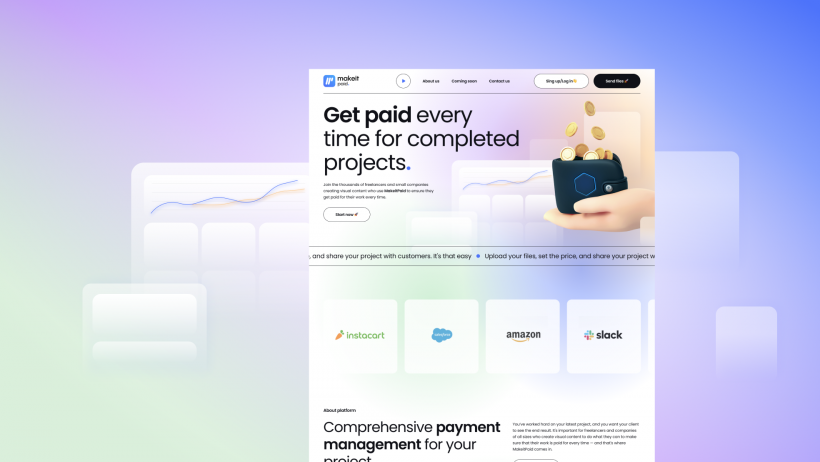We were approached by an interesting client from the USA. Our costumer is a 3D modeling and rendering company for the real estate industry. At first, the team needed a way to send the results of their work to clients in a safe way, which we provided. But this was only the beginning, because the new platform has every chance of changing the rules of the game in the visual content market.
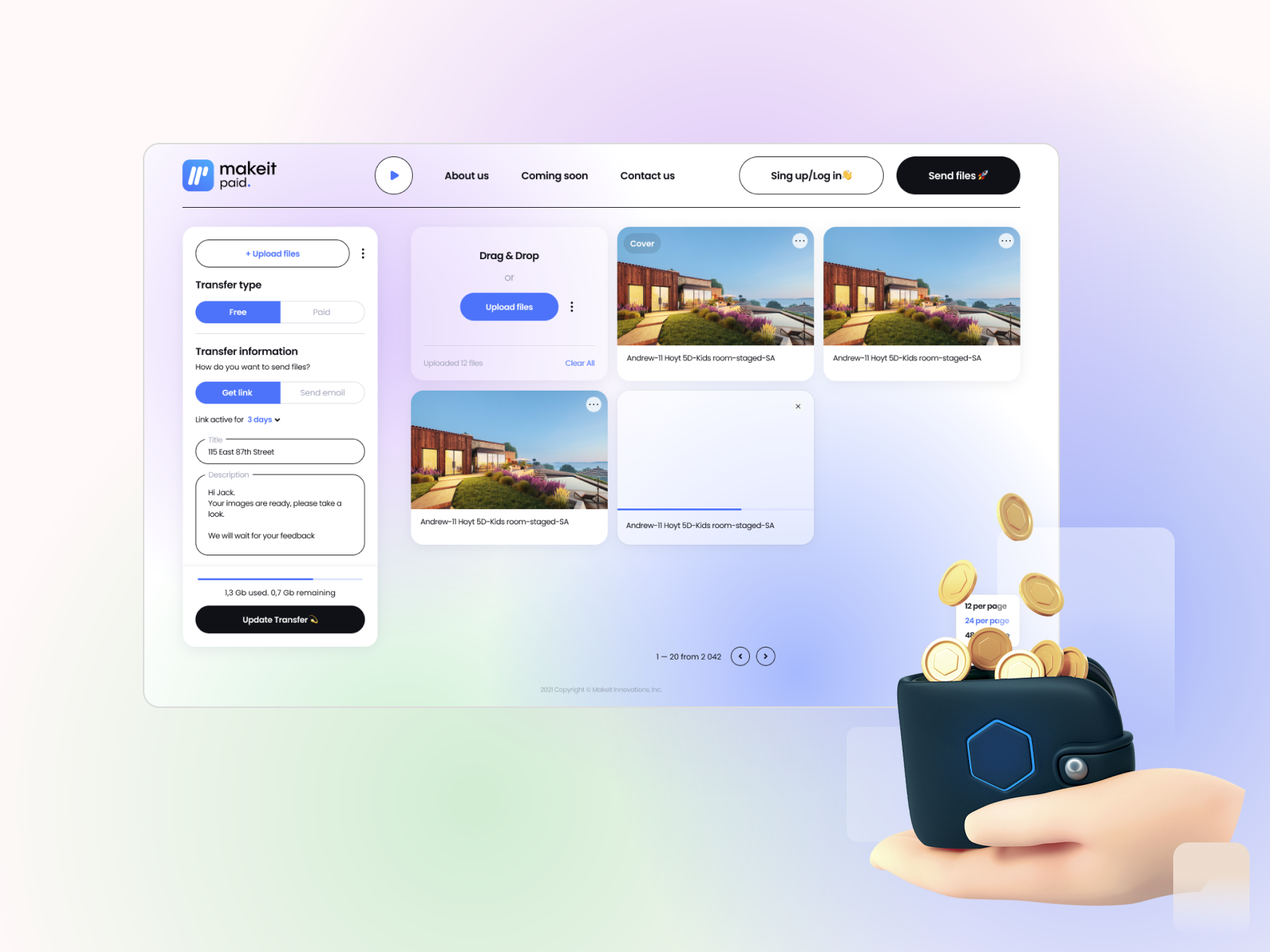
Our client
Virtual staging services are extremely popular in the United States, using 3D graphics to present real estate, which helps brokers, agencies, and developers solve marketing problems.
Why show potential buyers or renters blank walls when graphics can help them picture any room?
Our clients team has excelled at creating such visual presentations. They can take a picture of a room that is empty and then "furnish" it with three-dimensional items to make it look photorealistic. The company's business was growing rapidly and attracting new customers, but at the same time, so were its problems.
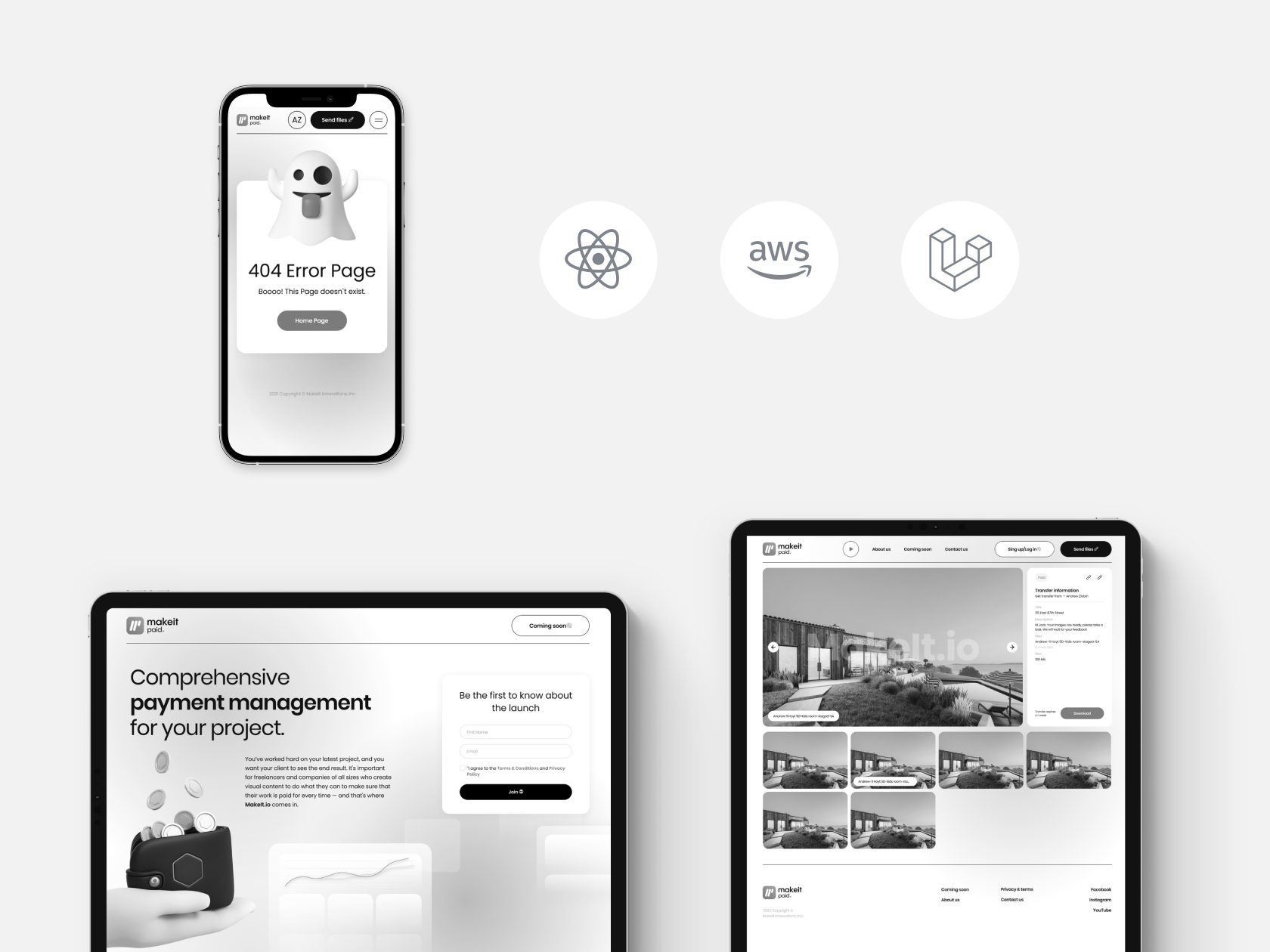
What the client wanted
In the creative industry, there is a sort of unwritten rule that companies that make content and freelancers work on a "post-payment" basis. First, they show the client the finished work, and the grateful client transfers the money. And it mostly works, but with this approach, the worker assumes all the risks. Some clients do not pay contractors on time, and some forget to pay at all after receiving the result.
As a rule, these are small jobs with small amounts. Often, contractors simply ignore the situation and move on to the next order. But at some point, client saw that these orders were costing them a lot of money.
After all, on average, 15-20% of the studio's work remains unpaid, meaning dozens of hours of work are wasted. According to the most conservative estimates, the company lost over a hundred thousand dollars annually in unpaid bills.
This problem is not new and has been plaguing agencies and freelancers for decades. Our clients knew from their own experience that there was no simple solution, so they decided to create one themselves.
This is how the concept of Makeit.io was born: a simple and secure file-sharing system for a fee.
Previously, our clients used well-known file-sharing systems like WeTransfer and Dropbox to transfer files. They are convenient, but there is no way to link file transfer to bill payment with such services.
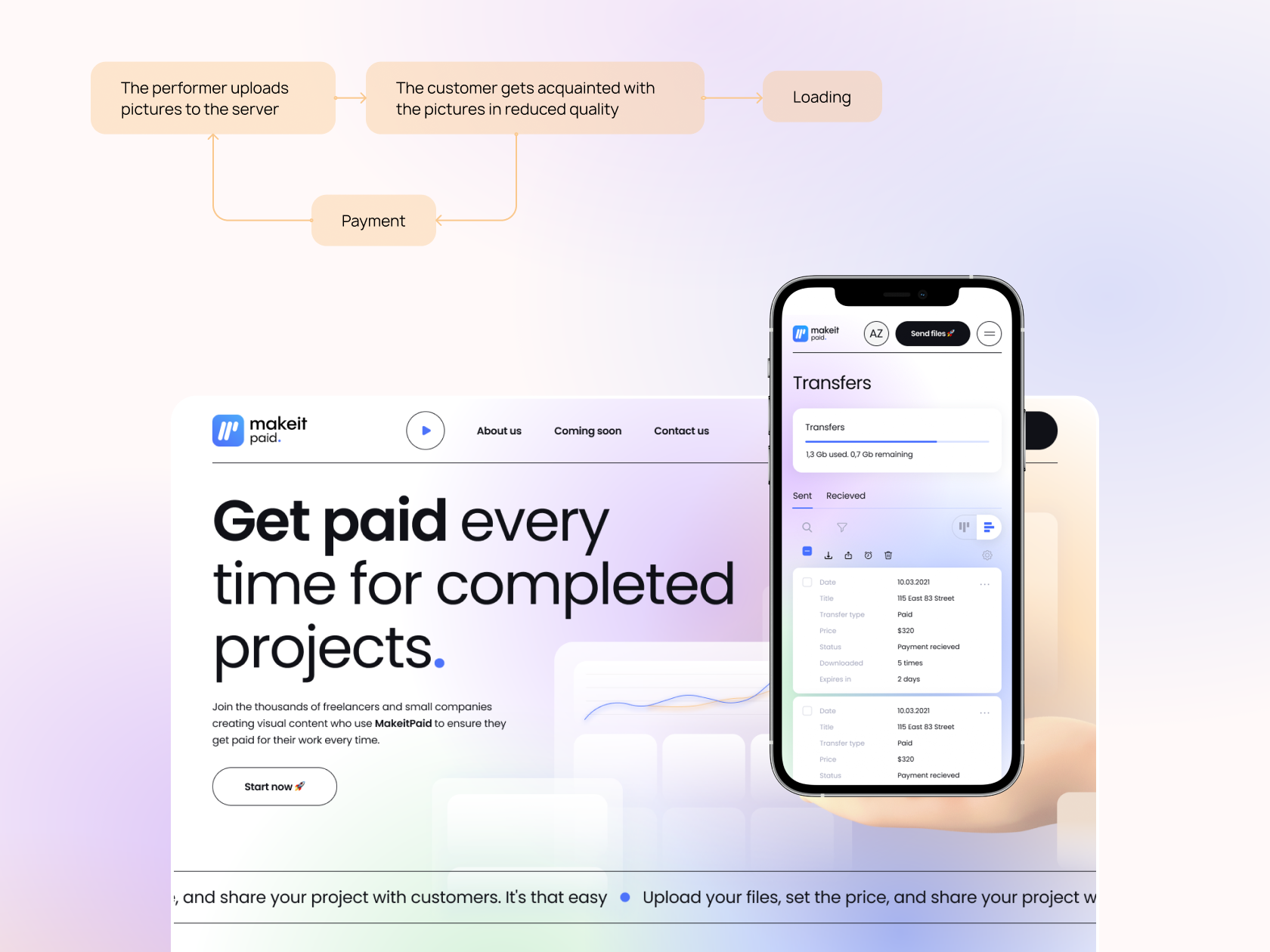
At the start, the goal of the development was very simple: to create a web service with paid file transfer functionality.
- In the first phase, we created an MVP where the contractor could upload their images to the server, and the customer could preview them in a reduced quality, pay for them, and download them.
- The platform had to work from any browser, integrate seamlessly with any payment method, and provide fast and reliable file uploads/downloads.
- If successful, this small tool could be turned into a secure content sales service for creative businesses.
The client came to us with a clear vision of the project and the mechanics of its operation. The team even had its own designer who drew prototypes and visuals. Our role here was to advise and implement the technical part.
Later, we didn't stop at the initial MVP and made a much more comprehensive product, but we'll talk about that a little bit below.
Technology stack
We made the platform a single-page application (SPA) so that it would be easy to use and flexible. The React JS framework became the basis of the project, and Laravel was also used.
To work with data, we turned to Amazon Web Services, which provided the appropriate reliability and speed.
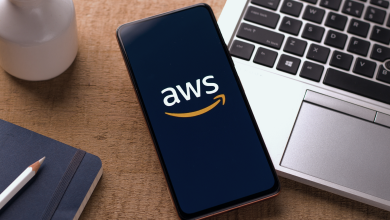
How we built the work
Even though the client already had a clear idea of what the service would be like, we held several brainstorming sessions with him to talk about how the platform would work.
The client's designer made prototypes with excellent visuals for the project, but our experts gave him important recommendations on UX—some screens did not follow the logic of building interfaces. When the essence of the project was polished, we could start working on the technical part of the development, the layout, and the backend.
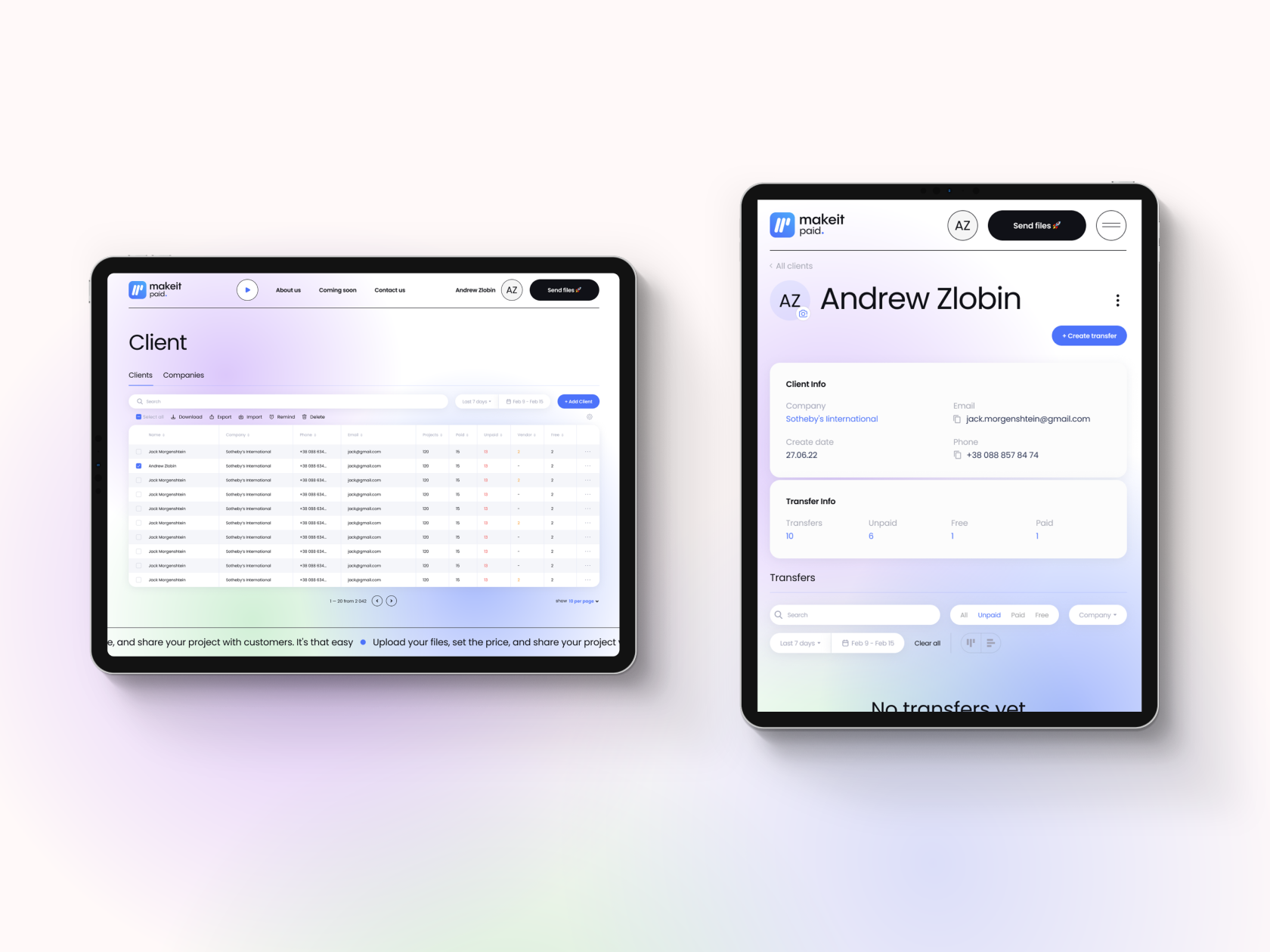
The development process was generally stable: we established SCRUM and moved in sprints with a slight lead time. It took the team just over four months to create the MVP.
How we communicated and reported
Our client approached the project with a startup mindset, so he was involved in the development process. It seemed that the product's owners were sincerely enjoying the process and wanted to perfect every button. All major decisions, mechanics, and functionality could always be discussed with the developers.
Our clients always have access to the development team's tracking and understand the status of the tasks being solved. In addition, the team presented the results of each sprint separately. Technical experts and team leads could answer any questions, evaluate some of the client's assumptions, and suggest new features.
What we have developed
Currently, the development can be divided into two stages: first, the launch of an MVP with key functionality, and then the release of a stronger product, which we call Makeit 2.0.
The key functionality of the service is paid file transfer. How does it work in practice? The mechanics are as follows:
- The creator of the image uploads it to the system and sets the price.
- The system generates a special download link for the buyer.
- The buyer clicks on the link and sees the image he wants - it is shown to him in a reduced quality and with watermarks.
- If the buyer is satisfied with everything, he clicks the "pay" button and makes a payment through any integrated payment service.
- After payment, the system gives the buyer a link to download the image in its original form - without watermarks, in high resolution.
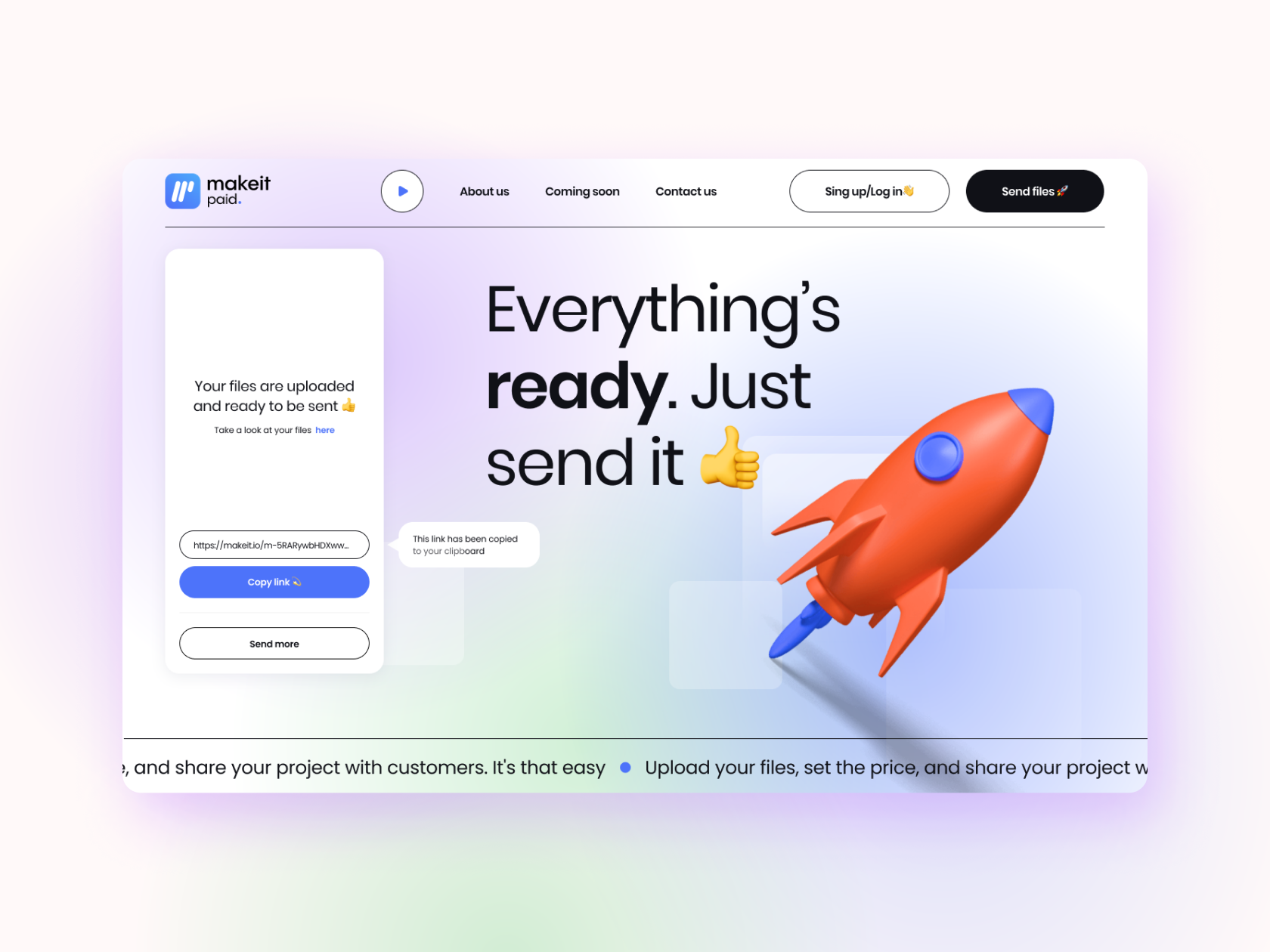
All this works with one file or several. Initially, the client made this mechanism for himself, but now he also intends to turn it into a mass service. The platform should attract similar companies and freelancers who want to sell their content safely.
That's why, almost immediately after the successful launch of the MVP, the team started working on a new version of the product.
The "second" version of MakeIt not only provides a mechanism for paid file transfer but also provides the platform's partners with all related services. In fact, it is a simplified CRM system where content makers can manage their digital sales. A number of features have been implemented for such users:
- a database of companies/customers and filters for them;
- the ability to export data from all transfers (for example, in the format of excel spreadsheets);
- integration with third-party cloud storage (Google Drive, Dropbox)
- The ability to download all your transfers as a single archive;
The new version of the product also includes a lot of small UX improvements, spreadsheet management capabilities, and many other end-user conveniences.
Development challenges
Problems arose at the stage of integrating third-party services into the platform.
At first, users could only upload files from their computer's file explorer. Later, Google Drive and Dropbox were added to the list of possible upload sources. It was important not just to combine the sources but to make this combination fast, convenient, and seamless. The team put a lot of effort into working out the process of uploading and downloading files: how to build a user-friendly file sequence? What should I do if one or more files have been replaced or deleted?
Problems arose with the Google Drive storage API. As it turned out, the official documentation for it was outdated at the time of development, and the developers had to find relevant information to work with.
When the client asked for the integration of payment services, things were a little different. The platform lets the file seller, the file buyer, and the platform all talk to each other in three ways. And while Stripe, a popular payment service, already has this feature, PayPal is still in the testing phase. Its implementation requires close communication with the service representatives.
But all these are administrative and bureaucratic difficulties rather than technical ones. All of them will be resolved.
Development results
We managed to fully realize the client's idea of creating a simple and fast paid file transfer system that helps creatives minimize financial risks.
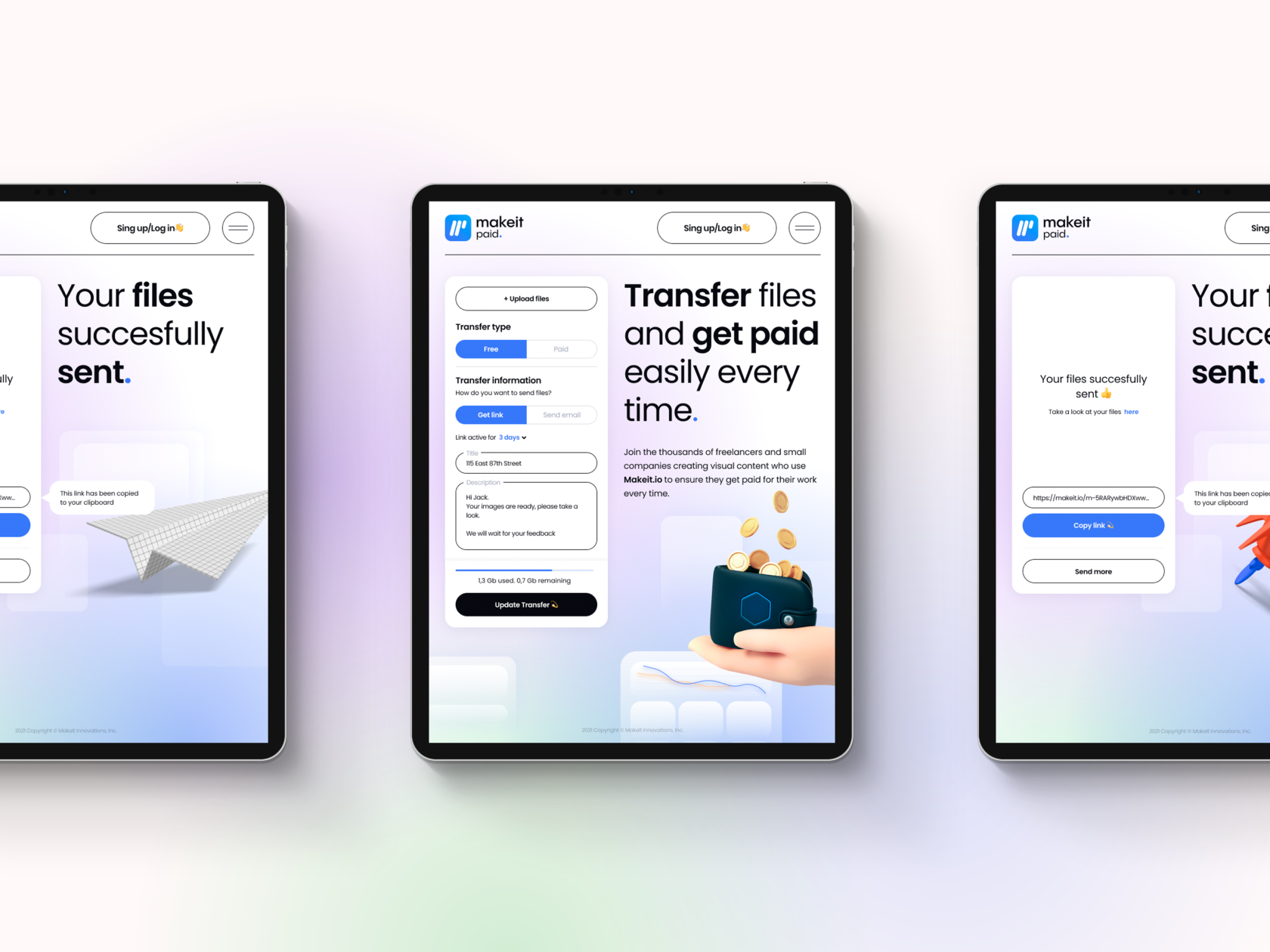
The new version of Makeit.io has been released recently; today it is a beautiful and convenient platform for securely selling visual content, attracting photographers, artists, designers, and 3D modelers.
The client already has a plan for the new version of the product: it can become a SaaS platform where accounts can be sold on a subscription basis to companies or independent freelancers. And we are happy to help them realize this vision. We are talking about a service that can change the lives of freelancers for the better once and for all.
